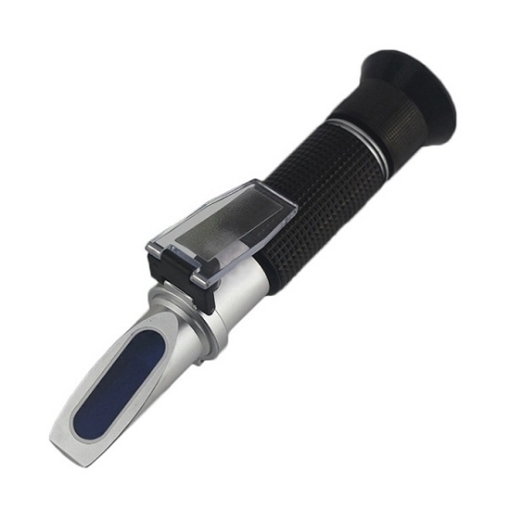In industries ranging from food and beverages to pharmaceuticals and automotive, refractometers serve as invaluable tools for measuring concentrations, quality, and properties of substances. However, the accuracy of refractometer readings is paramount to the reliability of results. To achieve precise measurements, careful attention to factors such as calibration, sample handling, and environmental conditions is essential. In this blog, we'll explore key strategies to ensure accurate refractometer readings.
Calibration: The Foundation of Accuracy
Regular calibration is the cornerstone of obtaining accurate readings from a refractometer. Calibrating against a known reference solution establishes a baseline for accurate measurements. It's crucial to follow the manufacturer's guidelines for calibration frequency and use only certified reference materials for this purpose.
Sample Preparation: Homogeneity Matters
Before placing a sample on the refractometer, ensure it's properly mixed and homogeneous. Inhomogeneous samples can lead to inconsistent readings due to variations in refractive index within the solution. Thoroughly mix liquids and, if necessary, filter or centrifuge them to remove any particles or air bubbles that might interfere with accurate measurements.
Sample Temperature: Control and Compensate
Refractive index is temperature-sensitive, so variations in sample temperature can impact measurements. Many refractometers offer temperature compensation features to adjust readings to a standard temperature. To ensure accuracy, allow the sample to equilibrate to the desired temperature and consider using a temperature-controlled sample chamber if available.
Cleanliness: Optics and Sample Surfaces
Cleanliness is paramount for accurate refractometer readings. Dust, fingerprints, or residues on the prism surface can distort light and affect results. Regularly clean the prism with a recommended solvent and use lint-free, soft materials to wipe it gently. Likewise, ensure the sample container or pipette is clean to avoid contamination.
Consistent Lighting Conditions: Minimize Variability
Lighting conditions can influence how you perceive the boundary between light and dark in the refractometer scale. Maintain consistent lighting in your workspace to minimize variability in readings. Some digital refractometers have built-in illumination to standardize lighting conditions.
Avoid Air Bubbles: A Common Pitfall
Air bubbles in the sample can lead to inaccurate measurements by altering the light path. To prevent this, gently tap the sample container to dislodge bubbles before measurement. If bubbles persist, allow the sample to rest and degas naturally or use a vacuum chamber if appropriate.
Handling the Instrument: Precision and Care
Handle the refractometer with care, as even slight misalignment or disturbances can affect measurements. Follow sisco's guidelines for proper instrument use, maintenance, and storage to ensure its longevity and accuracy.
Accurate refractometer readings are crucial for informed decision-making, quality control, and research. By following these guidelines and understanding the impact of factors like calibration, sample handling, temperature, and cleanliness, you can ensure precise measurements. Consistent attention to these considerations empowers you to harness the full potential of refractometers, enhancing the reliability and significance of the results they provide.

